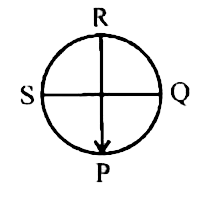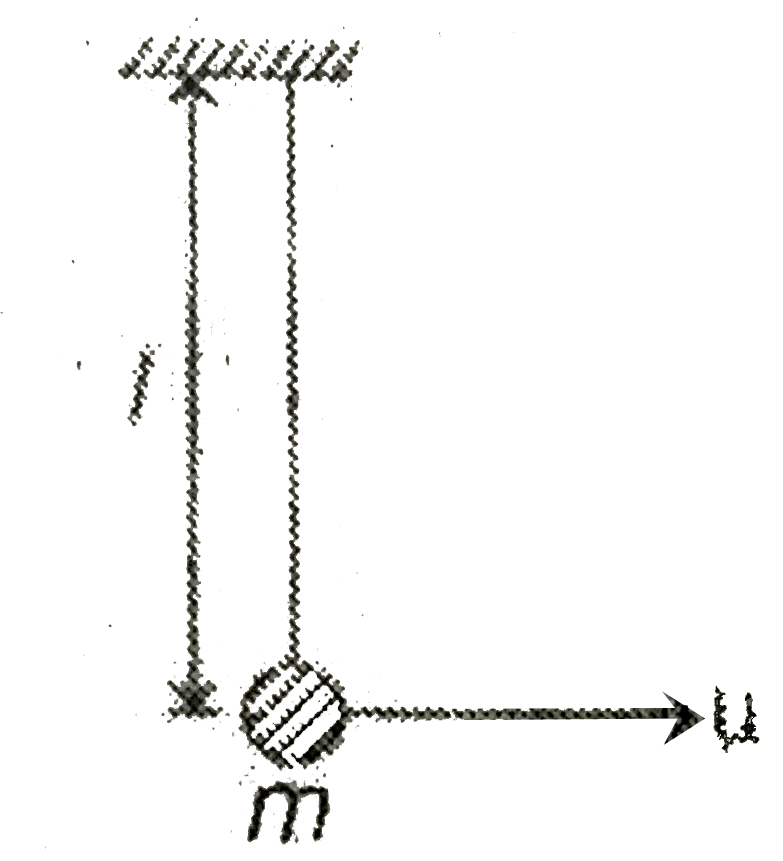A stone attached to one end of string is revolved around a stick so that the string winds upon the stick and gets shortened. What is conserved ?
angular momentum
linear momentum
kinetic energy
none of the above
The correct Answer is:A
To solve the problem, we need to analyze the situation involving the stone attached to a string that is being revolved around a stick. Let's break down the steps to determine what is conserved in this scenario.
1. Understand the System:
- We have a stone attached to one end of a string. The other end of the string is wound around a stick. As the stone revolves, the string gets shorter because it is winding around the stick.
2. Identify Forces Acting on the Stone:
- The stone is undergoing circular motion. The only forces acting on it are the tension in the string and the gravitational force. However, since the stick is fixed and there are no external torques acting on the system, we can analyze the motion in terms of angular momentum.
3. Angular Momentum:
- Angular momentum (L) for an object in circular motion is given by the formula:
L=mvr
where m is the mass of the stone, v is its tangential velocity, and r is the radius of the circular path (length of the string).
4. Conservation of Angular Momentum:
- In the absence of external torques, the angular momentum of the system is conserved. As the stone moves in a circle and the string winds up, the radius r decreases, which means that the velocity v must increase to keep the product mvr constant (since L is conserved).
5. Conclusion:
- Therefore, the quantity that is conserved in this scenario is the angular momentum of the stone.
Final Answer:
Angular momentum is conserved.
---
- We have a stone attached to one end of a string. The other end of the string is wound around a stick. As the stone revolves, the string gets shorter because it is winding around the stick.
- The stone is undergoing circular motion. The only forces acting on it are the tension in the string and the gravitational force. However, since the stick is fixed and there are no external torques acting on the system, we can analyze the motion in terms of angular momentum.
- Angular momentum (L) for an object in circular motion is given by the formula:
L=mvr
where m is the mass of the stone, v is its tangential velocity, and r is the radius of the circular path (length of the string).
- In the absence of external torques, the angular momentum of the system is conserved. As the stone moves in a circle and the string winds up, the radius r decreases, which means that the velocity v must increase to keep the product mvr constant (since L is conserved).
- Therefore, the quantity that is conserved in this scenario is the angular momentum of the stone.
Angular momentum is conserved.
Topper's Solved these Questions
- BOOK - MOTIONCHAPTER - ROTATIONAL MOTION EXERCISE - Exercise - 240videos
ROTATIONAL MOTION
- BOOK - MOTIONCHAPTER - ROTATIONAL MOTION EXERCISE - Exercise - 3 ( Section-A )46videos
ROTATIONAL MOTION
- BOOK - MOTIONCHAPTER - ROTATIONAL MOTION EXERCISE - Exercise - 3 ( Section-B )24videos
ROTATIONAL MOTION
- BOOK - MOTIONCHAPTER - RAY OPTICSEXERCISE - Exercise-438videos
RAY OPTICS
- BOOK - MOTIONCHAPTER - SEMI CONDUCTOR AND LOGIC GATESEXERCISE - EXERCISE 334videos
SEMI CONDUCTOR AND LOGIC GATES
Similar Questions
A stone is attached to one end of a string and rotated in a vertical circle . If the string breaks at the position of maximum tension , then it will break at
 View Solution
View SolutionA stone is attached to one end of a string and rotated in a vertical circle . If the string breaks at the position of maximum tension , then it will break at
 View Solution
View Solution
Knowledge Check
- Question 1 - Select One
A small body is attached to one end of a string is revolved around a rod so that the string winds upon the rod and get shortend. The quantity which is conserved is
Aangular momentumBlinear momentumCkinetic energyDpotential enegy - Question 2 - Select One
A particle of mass m is attached to one end of a light inextensible string and the other end of the string is fixed in vertical plane as shown. Particle is given a horizontal velocity u=√52gl

The maximum angle made by the string with downward vertical isAcos−1(14)Bsin−1(14)Cπ2+cos−1(14)Dπ−cos−1(14) - Question 3 - Select One
IF a stone is tied to one end of the string and whirled in verticle circle, then the tension in the string at the lowest point is equal to
Acentripetal forceBthe difference between centripetal force and weight of the stoneCthe addition of the centripetal force and weight of the stoneDweight of the stone
A stone is tied to one end of a string and rotated in a vertical circle . What is the difference in tensions of the string at lowest and highest points of the vertical circle ?
View SolutionA stone tied to a string is rotated in a circle. If the string is cut, the stone flies away from the circle because
View SolutionA stone tied at the end of sring is whirled in a circle. If the string break , the stone flies away tangentially . Why ?
View SolutionA stone tied to one end of rope and rotated in a circular motion . If the string suddenly breaks then the stone travels.
View SolutionA particle of mass m is attached to one end of a light inextensible string and the other end of the string is fixed in vertical plane as shown. Particle is given a horizontal velocity u=√52gl

The tension in the string at an instant when acceleration of the particle is horizontal and √3g isView Solution

